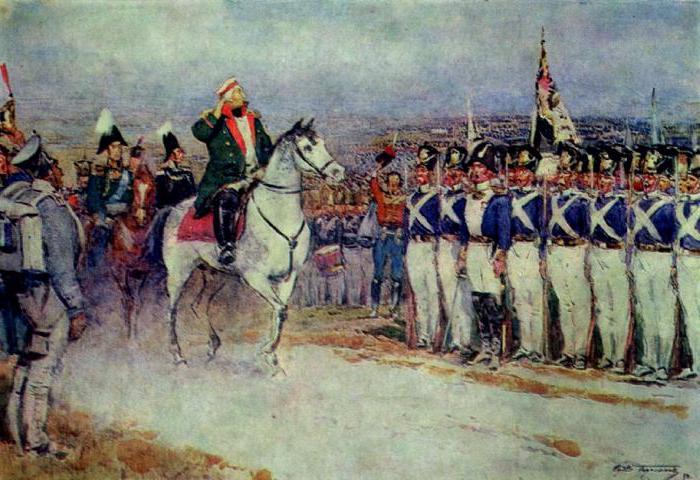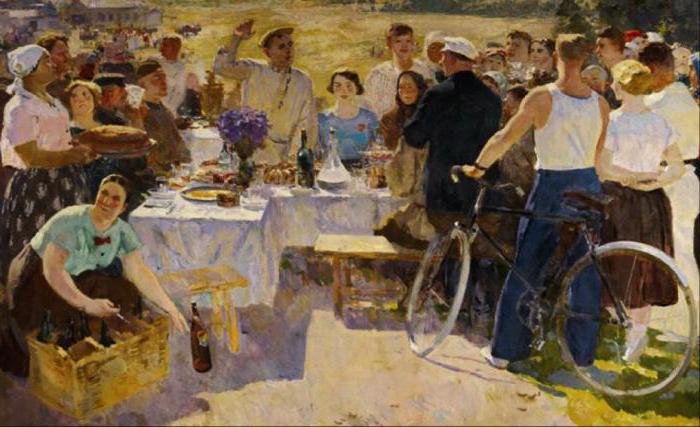He was not a cell artist, living only in the world of his images, and actively participated in the life of his country. S.V. Gerasimov for a long time led the Union of Artists of the USSR, which means that he participated in the leadership of the Communist Party in the field of fine art. He is remembered as a skilled administrator with a reputation as a moderate liberal, he was an attentive and skillful teacher who left many students. But his main legacy is paintings, watercolors and graphics, marked by the seal of great talent and a delicately feeling soul.
Small homeland
In 1885, Sergei Vasilyevich Gerasimov was born into a poor family in Mozhaysk, near Moscow. The biography of the artist says that his life was connected with these places for a very long time. Subsequently, already holding senior positions in Moscow, he came to his Mozhaisk home, where a small workshop was located, and used every opportunity to paint, trying to express the dim beauty of the surroundings in the landscapes.
The son of a tanner, a craftsman, he managed to get an excellent education by graduating from two leading metropolitan art schools: the Stroganov Art-Industrial and the School of Painting, Sculpture and Architecture. He was lucky with the teachers, among whom were Konstantin Korovin and Sergey Ivanov. In addition to the masterly pictorial technique of working with oil paints, Sergei Vasilievich mastered watercolor, lithography, etching and other types of graphics, which expanded his creative abilities.
Style search
He met the October Revolution with an accomplished master. S. V. Gerasimov was known for works created in various materials and in various genres: “At the Cart” (1906), “Wedding in a Tavern” (1909), “Portrait of I. D. Sytin” (1912), “In the North "(1913). Genre scenes, portraits and especially landscapes of that time are filled with a subtle poetic feeling, expressed in a free pictorial manner, close to impressionism.

The search for new forms in painting, which marked the beginning of the 20th century, could not pass by the young but very educated Gerasimov. Subsequently, the artist will go through a period of enthusiasm for Cezanne and the early cubists (Front-line Worker (1926)). There was a time when the primitivists seemed close to him. But the opinion of a large number of critics who attribute Gerasimov to the outstanding masters of Russian impressionism seems the most justified. Even his mechanical attribution to the founders of socialist realism in painting is more connected with his high position in the official hierarchy.
New times
After a long break caused by the First World War and the difficulties of the revolutionary time, S. V. Gerasimov became involved in the active artistic life of a young country. He takes part in the work of such creative associations as Makovets, Society of Moscow Artists and the Association of Artists of Revolutionary Russia (AHRR), which became the forerunner of the Union of Artists of the USSR.

He is trying to master the revolutionary propaganda genre: “The Oath of Siberian Partisans” (1933), “V. I. Lenin at the Second Congress of Soviets among peasant delegates ”(1931),“ Collective Farm Holiday ”(1937). S. V. Gerasimov successfully worked in the genre of illustration, creating graphic sheets for The Artamonovs Affair, The Captain's Daughter, Nekrasov, Tolstoy, Ostrovsky dramas, and other classical and contemporary books. His watercolors, which guessed the tricks of the work with pasty, oil paints, were recognized as innovative by many domestic and foreign connoisseurs. But the landscape remained a favorite genre.
Middle-band singer
The artist traveled a lot. Sergei Vasilyevich Gerasimov, whose biography contains information about a tour of European countries, left a series of virtuoso full-scale sketches made in Italy, France, and the Caucasus. During World War II, he was evacuated to Central Asia. There, in his paintings, a hot oriental flavor, with bright colors and blinding light, “settled”. But there was a land where he was always drawn, where he always returned - the Moscow Region, his native Mozhaisk.
In small sketches depicting the surroundings of his hometown, and in more elaborate canvases, the master’s talent is especially harmonious. Sergey Gerasimov is a Russian artist who continued the traditions of Levitan, Vasiliev, Kuindzhi. The main thing in his landscape paintings is “Winter” (1939), “Dam” (1929), “Spring Spill” (1935), a series of views of Mozhaisk (1940–1950) and many others - amazing emotional content, harmony and freshness of color, virtuoso beautiful craftsmanship.
1943, "Mother of the Partisan"
His work is truly multifaceted. The master of subtle poetic nuances, the artist Sergei Gerasimov during the war creates a canvas that has become a symbol of the stamina of the people, manifested in confronting the formidable and cruel enemy.
The image of an elderly peasant woman whose son is taken to execution tells of spiritual strength, which has become an insurmountable obstacle for the invaders. This picture told foreign viewers about the Russian character more than volumes of ideologically seasoned literature. She explained a lot, telling about the reasons for the invincibility of our people. What prompted Gerasimov to write this picture? To see here only the desire to meet ideological criteria is wrong. “Mother of the Partisan” is a work of a true Russian artist, whose soul is inseparable from the people, from the earth and nature, who raised him.
Sergey Gerasimov, artist. short biography
Time and place of birth - September 14, 1885, Mozhaysk.
1901–1907 - study in Stroganov.
1907–1912 - training at the Moscow School of Painting, Sculpture and Architecture.
1912–1914 - participation in exhibitions, teaching at an art school at the printing house of I. D. Sytin.
In 1914 he was called up for military service.
1917 - return to Moscow, participation in creative art associations.
Teaching: State School of Printing under the People's Commissariat of Education (1918–1923), Higher Art and Technical Workshops (1920–1929), Moscow Polygraphic Institute (1930–1936), Institute named after Surikov (1937–1950), Moscow State Art and Industry Academy named after S. G. Stroganov (1950–1954).
1958–1964 - First Secretary of the Union of Artists of the USSR.
He died on April 20, 1964.